|
I introduced Perler beads as a maker option in the library this year, and I wanted to share some advice I wish I'd known before I started. Perler beads, or fuse beads, are very small cylinders that can be arranged on plastic peg boards. You can use an iron or heat press on the design to melt the beads together, and then you have a 3D design that can serve as a nameplate, bookmark, earrings, key chain, or decoration. I've seen this in secondary libraries (and I got a useful start from Kelsey Bogan's high school library blog tips), and I wanted to bring it to my elementary library, too. I wanted to have this as an ongoing station that's available all the time, but I see 800 students, ages 4 - 12 each week -- I would almost certainly have beads everywhere--so I needed more of a guided system. If you want to try them in your library or classroom, here's how I got started: Scheduling the Makerspace Time I started with an after-school craft club, made up of about thirty 3rd, 4th, and 5th graders, who stayed for about 45 minutes after school. We did origami, rubber band bracelets, washi tape cards, and Perler beads. It was good to test drive the projects with a motivated group of students before I rolled it out to library classes. For our makerspace workshop days, full classes came in, and students could choose from a variety of table station activities, including Perler beads. Since we have such a large school, we needed a lot of materials prepped and available for back-to-back classes. Some crafts were ready when students left the library, but Perler bead designs have to be ironed (and cooled). I couldn't do that while I was also supervising classes, but having volunteers on hand to iron them right away would have been really helpful. As the designs stack up, all those peg boards are used up, and space becomes limited to safely store the (relatively fragile) un-ironed projects. I used sticky notes for student names and stashed them underneath the peg boards so that when I ironed them later, I knew which design belonged to which student. As students are building their designs, it helps if they don't use one single line of beads (these are too fragile and might not fuse together). They should also avoid going right to the edge of the peg boards if possible (this makes it easier to iron). What to Buy You need beads, peg boards, a heat press, parchment paper, designs, bead storage, designs-in-progress storage, and finished design storage. You might also want work trays, tweezers, and bead vacuums. Beads - So Many Beads My biggest, most crucial tip is this: if you want students to be able to follow design patterns (not just free-design), buy the beads in pre-sorted packages. I saved money by buying two giant tubs of beads like this: I don't want to confess to you how many seasons of various shows I went through over school breaks as I sorted 11,000 beads into fifty or so color containers - and I still wasn't finished. I had a very dear volunteer help with some of it, and very dear students come in over some recesses who sorted a few hundred, but it is not a sustainable process for a school as large as mine. Nobody has time to sort that many beads! I did also buy additional packages of pre-sorted beads, and we went through some specific colors very quickly, so it's a good idea to get a lot of red, black, white, yellow, navy, and brown, in addition to orange, green, tan, pink, and purple. The extra colors in some designs, with fun names like toothpaste and butterscotch, do make a difference for shading and detail, but you could probably get away with standard colors and more basic design patterns. Design Patterns I also bought a few design pattern books like this one, and some of the bead kits I bought came with design patterns. You can find designs online, and it would be a fun project to invite kids to make their own patterns on graph paper, too. Heat Press You will also need a heat press to fuse the beads together. It's a good idea to get one with a safety stand so you can rest the hot iron on it. Mine has a cord; it hasn't really been a problem, but a cordless one might be a little more convenient to handle. Parchment Paper Parchment paper protects the beads and the plastic peg board from the direct heat of the iron. I got 6-inch square pre-cut pieces, and because no library ever has enough money, I have been able to re-use the paper sheets multiple times before they wear out. They don't stick to the iron (of course you don't press it longer than a few seconds at a time). However, you do have to be careful about arranging the paper on the beads so you don't bump them off the peg board, especially at the edges, before they fuse together. An alternate method is to apply masking tape to the finished design and iron over that, and that is definitely easier when you flip the design over to heat press the other side, but taping it is a tricky business - easy to accidentally pull up beads the students have arranged. Parchment paper works better for me. Peg Boards Some of the best advice from Kelsey Bogan's blog (linked above) was to buy lots and lots of peg boards. If you have class after class building designs during one day, you need to have enough for each new student until you can iron the finished designs and remove them from the peg boards. Also, it's possible that you might warp some of the plastic boards due to heat from the heat press, so you might need replacements on hand. Peg boards are available in lots of shapes and sizes - I got a lot of these squares, as well as some circles and hexagons. I also got some smaller plastic boards in the shape of flowers, stars, and hearts (some of these are included in Perler bead kits or with design books). Bead Storage I tried two different sizes of food containers to store beads - larger tubs for storing colors, and smaller condiment cups for individual students at their work stations. The idea was that they could scoop out the colors they needed from the larger containers and take them back to their tables. In practice, the lids on the larger containers were unwieldy for lots of students (although secure when latched), so I wish I'd found a better solution. The condiment cups worked pretty well - I ended up just filling several of them with red or yellow or popular colors and scattering those (with lids on) on each table. I did have some multicolor tubs out, too. Some students were more invested in using specific colors, so having plenty available to refill was helpful. Storage It's really good to think about this in advance - storing the sorted beads, peg boards, and designs in progress takes up space. I bought some plastic containers with latching lids to store the sorted bead tubs, and I bought some flat plastic case containers to protect and store the student designs that were finished, but not yet fused. Originally, I planned to layer the designs on top of each other inside the cases, but I was too scared I would mess up the ones underneath, so I only used a single layer. I had to find space for the cases outside of the main library area so no students would accidentally bump in to the finished designs. Additional Items I did actually buy some recyclable trays for students to work on, thinking they could use them to safeguard their designs or bead cups, but they really haven't needed those - they just work on the table surface and it's worked pretty well. I also got some tweezers to help handle the beads. Some students really like using them - others prefer to use their fingers. It's not a must-have, but I also got the mini rolling bead vacuum, and it is so satisfying to use that students argue about who gets to clean the floor under the table. Of course, it collects all the beads together, so whatever falls will be mixed up and go in the multicolor bin. If I had only upper elementary or secondary students, I think this would work really well as an ongoing station that students could come in and access. However, because I have very young students and my library space is designed so that they can touch and reach everything, I schedule Perler bead design work as an activity that happens during designated times. Rolling storage carts - one for designs in progress, and one that holds beads, design books, and peg boards - works best so that I can wheel the supplies out while they're in use. This activity does require a lot of supplies, and it can get expensive for large numbers of students. Benefits My students were highly engaged in this activity, although it was challenging for a few of them. Many of them chose to come back during recess times to finish more intricate designs. Learning activities included reading and following diagrams with designs, experimenting with spatial awareness as they created their own designs, and persisting with an artistic activity from start to finish. How have you used this in your library or classroom successfully? Please share your tips and tricks in the comments! I've updated with some specific tips and directions for ironing Perler bead designs after moving to a middle school library position - let me know what else works well for you!
0 Comments
Your comment will be posted after it is approved.
Leave a Reply. |
Jamie Wright
I've had the privilege of working with hundreds of students and families in IA, CT, NC, MO, TX, and Canada. I love being a teacher-librarian! Categories
All
Archives
May 2024
|
- Home
-
Book Recommendations
-
Alphabetical List of Book Recommendations
>
- Abby Spencer Goes to Bollywood
- Absolutely Almost
- The Absolutely True Diary of a Part-Time Indian
- After Ever After
- After Iris
- Airborn >
- Alex Rider - series
- All Fall Down
- All the Answers
- All the Broken Pieces
- All You Knead is Love
- Allegedly
- All's Faire in Middle School
- Amal Unbound
- Amazing Grace
- American Born Chinese
- Amina's Voice
- Among the Hidden - series
- Anger is a Gift
- Anne of Green Gables - series >
- Artemis Fowl - series
- Athlete vs. Mathlete
- Awkward
- The Bad Apple - Merits of Mischief
- Bad Princess: True Tales from Behind the Tiara
- Bamboo People
- Ban This Book
- Because of Mr. Terupt
- Bernice Buttman, Model Citizen
- Bionic
- The Black Pearl
- Blended
- Blue Jasmine
- Bomb: The Race to Make - and Steal - the World's Most Dangerous Weapon
- The Book of a Thousand Days
- Booked
- A Boy Called Bat
- Boys Without Names
- The Breadwinner Trilogy
- Breaking Stalin's Nose
- Bright
- Brown Girl Dreaming
- Bud, Not Buddy
- Bump
- The Cardturner
- Carry On
- Caterpillar Summer
- Catherine, Called Birdy >
- Charlie and the Chocolate Factory
- Chasing Secrets
- Chasing Vermeer
- Checked
- Chronicles of Prydain
- Chu Ju's House
- Circa Now
- Click
- Climbing the Stairs
- Code Name Verity - Series
- Code Talker
- Colin Fischer
- Come November
- Confetti Girl
- Count Me In
- Counting By 7s
- Courage for Beginners
- The Courage Test
- Crenshaw
- Criss Cross
- A Crooked Kind of Perfect
- Curveball: The Year I Lost My Grip
- Dangerous
- Dead End in Norvelt
- Dealing with Dragons
- Dear Mr. Henshaw
- A Diamond in the Desert
- The Dirt Diary - Series
- Divergent - Series
- Does My Head Look Big in This?
- Dog Man
- Dog Whisperer - Series
- Drive Me Crazy
- A Drop of Hope
- Drums, Girls, and Dangerous Pie
- Echo
- El Deafo
- Eleanor & Park
- Elephant Secret
- Eleven Birthdays
- Elijah of Buxton
- Ella Enchanted
- Ellen Outside the Lines
- Emma-Jean Lazarus Fell Out of a Tree
- Ender's Game
- Enna Burning
- Enola Holmes
- Eragon
- Escape from Mr. Lemoncello's Library
- Escape Under the Forever Sky
- Esperanza Rising >
- Eventown
- Ever
- Ever After High
- Every Shiny Thing
- Everything on a Waffle
- Fairest
- Falling Over Sideways
- The False Prince Series
- Fake Mustache
- Family Game Night and Other Catastrophes
- Famous Phonies
- Feathers
- Fever, 1793
- The Fifth Wave
- Fifty-Four Things Wrong with Gwendolyn Rogers
- The 57 Bus
- Finding Perfect
- The Fingertips of Duncan Dorfman
- The Fire, The Water, and Maudie McGinn
- The First Rule of Punk
- Fish in a Tree
- Flora and Ulysses
- Flygirl by Sherri Smith
- Focused
- Forget Me Not
- The Fourteenth Goldfish
- Framed!
- Frankie Sparks - Series
- Free Thaddeus!
- From the Mixed-up Files of Mrs. Basil E. Frankweiler >
- Front Desk
- Full Cicada Moon
- The Garden of My Imaan
- Garvey's Choice
- Geek Girl - Series
- The Genius Files >
- Ghost
- A Gift of Magic
- The Girl in the Well is Me
- Girl, Stolen
- The Girl Who Could Fly
- The Girl Who Drank the Moon
- The Girl Who Threw Butterflies
- The Giver
- Go Big or Go Home
- Gold Medal Summer
- Golden Girl
- The Goldfish Boy
- Good Dog
- A Good Kind of Trouble
- The Goose Girl
- Gracefully Grayson
- Grandmaster
- The Graveyard Book
- Greetings from Witness Protection
- Hachiko Waits
- The Handbook for Dragon Slayers
- A Handful of Stars
- Half a World Away
- Hamster Princess - Series
- Harry Potter - Series
- Hatchet
- Her Own Two Feet
- Hero
- The Heroes of Olympus Series
- Hey, Kiddo
- The Higher Power of Lucky
- Holes >
- Home of the Brave
- The Homework Machine
- The Homework Strike
- The Honest Truth
- Hope Was Here
- The House That Lou Built
- How to Ditch Your Fairy
- How to Steal a Dog
- How to Train Your Dragon Series
- The Hundred Dresses
- The Hunger Games Series
- I Am a Genius of Unspeakable Evil and I Want to Be Your Class President
- I Am Not Your Perfect Mexican Daughter
- I Have a Bad Feeling About This
- I Am Number Four
- I Heart Band
- I Kill the Mockingbird
- I Survived . . . Series
- I Will Always Write Back
- Ida B
- If I Were You
- If a Tree Falls at Lunch Period
- In the Shadow of the Sun
- Incommunicado
- Inside Out and Back Again
- Insignificant Events in the Life of a Cactus
- The Invention of Hugo Cabret
- Invisible World
- It's Raining Cupcakes
- James and the Giant Peach
- Jefferson's Sons
- Karma Khullar's Mustache
- Keeping Corner
- The Kidney Hypothetical
- The Kite Fighters >
- Knock Out
- Lasagna Means I Love You
- The Last Book in the Universe
- The Last Shot: Mystery at the Final Four
- Left Out
- Legend
- The Lemonade War
- Liberty Porter, First Daughter
- Lies We Tell Ourselves
- Lights, Camera, Disaster
- Lily and Dunkin
- The Limit
- The Lions of Little Rock
- Listen, Slowly
- Listening for Lions
- Little House - Series
- Little Miss Evil
- A Little Princess
- Locomotion >
- The Long Ride
- A Long Walk to Water
- Long Way Down
- Losers Take All
- The Lost Girl
- Lost in the Sun
- Love That Dog
- Lunch Money
- The Magician's Elephant
- Maniac Magee
- Mascot
- Masterpiece >
- A Match Made in Mehendi
- Matched Trilogy
- Maus
- Maybe a Fox
- Maybe He Just Likes You
- The Maze Runner
- Me and Marvin Gardens
- Medusa Jones
- A Million Shades of Gray
- Minnie McClary Speaks Her Mind
- The Miraculous Journey of Edward Tulane
- The Miscalculations of Lightning Girl
- Mockingbird
- Morning Girl
- Morning Star
- Mrs. Frisby and the Rats of NIMH >
- My Basmati Bat Mitzvah
- My Life in Pink and Green
- My Life with the Liars
- The Mysterious Benedict Society
- Nathan Hale's Hazardous Tales
- Neil Flambe
- The Neptune Project
- Nerd Camp
- NERDS
- New Kid
- The Next Great Paulie Fink
- The Night Diary
- A Night Divided
- Ninth Ward
- No Summit Out of Sight
- No Talking
- Not If I Can Help It
- Notes from an Accidental Band Geek
- Nothing But the Truth
- Number the Stars >
- OCDaniel
- Olive's Ocean
- On My Honor >
- On the Wings of Heroes
- The One and Only Ivan
- One Came Home
- One Crazy Summer
- One Half from the East
- One Jar of Magic
- One of the Survivors
- One of Us is Lying
- One Small Step
- One True Way
- Orbiting Jupiter
- The Other Half of My Heart
- The Other Side of Truth
- Out of My Mind
- Out of the Dust
- Outrun the Moon
- Paint the Wind >
- The Paper Cowboy
- Paperboy
- Peak
- Percy Jackson and the Olympians
- The Phantom Tollbooth
- Piecing Me Together
- Pippi Longstocking
- Planet Earth is Blue
- The Player King
- The Porcupine of Truth
- Posted
- The President's Daughter (series)
- Princess Academy
- The Princess in Black
- The Pros of Cons
- The Puttermans Are in the House
- The Puzzling World of Winston Breen
- Rachel Spinelli Punched Me in the Face
- Rancho Rosetta Series
- Real Friends
- Rebel McKenzie
- The Red Pencil
- Red Thread Sisters
- Red, White, and Whole
- Reluctant Journal of Henry K. Larsen
- The Report Card
- Rescued
- Restart
- Revolution is Not a Dinner Party
- River Secrets
- Roll With It
- Roller Girl
- Romeo Blue
- Roses and Radicals
- Ruby on the Outside
- Rules
- Rules for Stealing Stars
- The Running Dream
- Sadako and the Thousand Paper Cranes
- Sahara Special
- Salt and Sugar
- Salt to the Sea
- Same Sun Here
- Samurai Rising
- Sarah, Plain and Tall
- Sarai and The Meaning of Awesome
- Saraswati's Way
- Sassy - series
- Save Me a Seat
- School of Fear
- The School for Good and Evil
- Schooled
- The Schwa Was Here
- A Season of Daring Greatly
- The Secret Diary of Lydia Bennet
- Secret Keeper
- The Secret School
- The Seventh Wish
- Shakespeare's Secret
- Shooting Kabul
- Sideways Stories from Wayside School
- The Sign of the Beaver
- Simon Sort of Says
- Sing Down the Moon
- A Single Shard >
- The Sisters Grimm
- Six Impossible Things
- Slider
- Sliding Into Home
- Smile
- The Smile
- A Snicker of Magic
- Soar
- Some Places More Than Others
- Something Rotten: A Fresh Look at Roadkill
- Song for a Whale
- Space Case
- Sparrow
- Speak
- Speechless
- Spin the Golden Light Bulb
- Stargazing
- Stargirl >
- Star Wars: Jedi Academy
- Stef Soto, Taco Queen
- Stink and the Incredible, Super Galactic Jawbreaker
- Stone Fox
- Story Thieves
- The Strange Case of Origami Yoda
- Stuck on Earth
- The Summer I Saved the World in 65 Days
- Surviving the Applewhites
- Survival Strategies of the Almost Brave
- The Swap
- The Sweetest Sound
- The Tail of Emily Windsnap >
- Take Me to the River
- The Tale of Despereaux
- A Tangle of Knots
- The Tapper Twins - series
- Tasting the Sky
- That Thing About Bollywood
- TBH This is So Awkward
- The Thief
- The Thing About Jellyfish
- Things Not Seen
- 33 Minutes
- Thirst
- This Journal Belongs to Ratchet
- This Side of Home
- Threads
- The Tiger Rising >
- A Time to Dance
- The Total Tragedy of a Girl Named Hamlet
- The Trials of Apollo (series)
- The True Meaning of Smekday
- Tumbling
- Turning 15 on the Road to Freedom
- The Two Princesses of Bamarre
- Uglies
- Ultra
- Unbound
- Under a Painted Sky
- The Underneath
- Under the Egg
- Ungifted
- Unidentified Suburban Object
- The Unlikely Hero of Room 13B
- The Unwanteds
- Uprising
- Upside Down Magic
- The View from Saturday
- The Vigilante Poets of Selwyn Academy
- Vincent Shadow, Toy Inventor
- Waiting for Normal
- Wake Up Missing
- The War That Saved My Life
- We Are All Made of Molecules
- We Are Okay
- We Are Party People
- Wedgie & Gizmo
- The Wednesday Wars
- The Westing Game
- When You Trap a Tiger
- Where the Mountain Meets the Moon
- Where the Red Fern Grows
- A Whole Nother Story
- Wishtree
- The Witch of Blackbird Pond >
- Woods Runner
- Woof
- Wonder
- Words on Fire
- The World Ends in April
- A Wrinkle in Time
- A Year in the Life of a Total and Complete Genius
- You Bring the Distant Near
- Young Fu of the Upper Yangtze
- Zebra Forest
- Zen and the Art of Faking It
- Zoey and Sassafras
-
Book Topics - Categories
>
- Book Topics - Animals
- Book Topics - The Arts
- Book Topics - Careers
- Book Topics - Competitions
- Book Topics - Families
- Book Topics - Health
- Book Topics - Historical Events
- Book Topics - Journeys
- Book Topics - Legends, Myths, and Fairy Tales
- Book Topics - The Outdoors
- Book Topics - School
- Book Topics - Society, Community
- Book Topics - Sports
- Book Topics - Unexplained Phenomena
-
Book List by Theme
>
- Book Themes - Self
- Book Themes - Families
- Book Themes - Education
- Book Themes - Nature and the Environment
- Book Themes - Social Interactions
- Book Themes - Society
- Book Themes - Prejudice
- Book Themes - Overcoming Obstacles
- Book Themes - Integrity
- Book Themes - Miscellaneous
- Book Themes - Values and Conflicts
- Book List by Format
- Book List by Author
- Book List by Setting
- Book List by Genre >
- Book List by Grade Level >
- Middle School Book Talk Videos
- Book Series Lists >
- Award - Winning Books >
- Book Quizzes
- Book Buying Guide Lists
- Eight Great Books Lists >
- IB-PYP Book Lists
- Picture Books for Lessons >
-
Alphabetical List of Book Recommendations
>
-
Enrichment
- Enrichment Ideas
-
Chez Moi Math Problem Solving
>
- Week 1 Chez Moi Math Problem Solving
- Week 2 Chez Moi Math Problem Solving
- Week 3 Chez Moi Math Problem Solving
- Week 4 Chez Moi Math Problem Solving
- Week 5 Chez Moi Math Problem Solving
- Week 6 Chez Moi Math Problem Solving
- Week 7 Chez Moi Math Problem Solving
- Week 8 Chez Moi Math Problem Solving
- Week 9 Chez Moi Math Problem Solving
- About
- Blog
© 2017 - 2024 - Ideas for Learners by Jamie Wright
|
- Home
-
Book Recommendations
-
Alphabetical List of Book Recommendations
>
- Abby Spencer Goes to Bollywood
- Absolutely Almost
- The Absolutely True Diary of a Part-Time Indian
- After Ever After
- After Iris
- Airborn >
- Alex Rider - series
- All Fall Down
- All the Answers
- All the Broken Pieces
- All You Knead is Love
- Allegedly
- All's Faire in Middle School
- Amal Unbound
- Amazing Grace
- American Born Chinese
- Amina's Voice
- Among the Hidden - series
- Anger is a Gift
- Anne of Green Gables - series >
- Artemis Fowl - series
- Athlete vs. Mathlete
- Awkward
- The Bad Apple - Merits of Mischief
- Bad Princess: True Tales from Behind the Tiara
- Bamboo People
- Ban This Book
- Because of Mr. Terupt
- Bernice Buttman, Model Citizen
- Bionic
- The Black Pearl
- Blended
- Blue Jasmine
- Bomb: The Race to Make - and Steal - the World's Most Dangerous Weapon
- The Book of a Thousand Days
- Booked
- A Boy Called Bat
- Boys Without Names
- The Breadwinner Trilogy
- Breaking Stalin's Nose
- Bright
- Brown Girl Dreaming
- Bud, Not Buddy
- Bump
- The Cardturner
- Carry On
- Caterpillar Summer
- Catherine, Called Birdy >
- Charlie and the Chocolate Factory
- Chasing Secrets
- Chasing Vermeer
- Checked
- Chronicles of Prydain
- Chu Ju's House
- Circa Now
- Click
- Climbing the Stairs
- Code Name Verity - Series
- Code Talker
- Colin Fischer
- Come November
- Confetti Girl
- Count Me In
- Counting By 7s
- Courage for Beginners
- The Courage Test
- Crenshaw
- Criss Cross
- A Crooked Kind of Perfect
- Curveball: The Year I Lost My Grip
- Dangerous
- Dead End in Norvelt
- Dealing with Dragons
- Dear Mr. Henshaw
- A Diamond in the Desert
- The Dirt Diary - Series
- Divergent - Series
- Does My Head Look Big in This?
- Dog Man
- Dog Whisperer - Series
- Drive Me Crazy
- A Drop of Hope
- Drums, Girls, and Dangerous Pie
- Echo
- El Deafo
- Eleanor & Park
- Elephant Secret
- Eleven Birthdays
- Elijah of Buxton
- Ella Enchanted
- Ellen Outside the Lines
- Emma-Jean Lazarus Fell Out of a Tree
- Ender's Game
- Enna Burning
- Enola Holmes
- Eragon
- Escape from Mr. Lemoncello's Library
- Escape Under the Forever Sky
- Esperanza Rising >
- Eventown
- Ever
- Ever After High
- Every Shiny Thing
- Everything on a Waffle
- Fairest
- Falling Over Sideways
- The False Prince Series
- Fake Mustache
- Family Game Night and Other Catastrophes
- Famous Phonies
- Feathers
- Fever, 1793
- The Fifth Wave
- Fifty-Four Things Wrong with Gwendolyn Rogers
- The 57 Bus
- Finding Perfect
- The Fingertips of Duncan Dorfman
- The Fire, The Water, and Maudie McGinn
- The First Rule of Punk
- Fish in a Tree
- Flora and Ulysses
- Flygirl by Sherri Smith
- Focused
- Forget Me Not
- The Fourteenth Goldfish
- Framed!
- Frankie Sparks - Series
- Free Thaddeus!
- From the Mixed-up Files of Mrs. Basil E. Frankweiler >
- Front Desk
- Full Cicada Moon
- The Garden of My Imaan
- Garvey's Choice
- Geek Girl - Series
- The Genius Files >
- Ghost
- A Gift of Magic
- The Girl in the Well is Me
- Girl, Stolen
- The Girl Who Could Fly
- The Girl Who Drank the Moon
- The Girl Who Threw Butterflies
- The Giver
- Go Big or Go Home
- Gold Medal Summer
- Golden Girl
- The Goldfish Boy
- Good Dog
- A Good Kind of Trouble
- The Goose Girl
- Gracefully Grayson
- Grandmaster
- The Graveyard Book
- Greetings from Witness Protection
- Hachiko Waits
- The Handbook for Dragon Slayers
- A Handful of Stars
- Half a World Away
- Hamster Princess - Series
- Harry Potter - Series
- Hatchet
- Her Own Two Feet
- Hero
- The Heroes of Olympus Series
- Hey, Kiddo
- The Higher Power of Lucky
- Holes >
- Home of the Brave
- The Homework Machine
- The Homework Strike
- The Honest Truth
- Hope Was Here
- The House That Lou Built
- How to Ditch Your Fairy
- How to Steal a Dog
- How to Train Your Dragon Series
- The Hundred Dresses
- The Hunger Games Series
- I Am a Genius of Unspeakable Evil and I Want to Be Your Class President
- I Am Not Your Perfect Mexican Daughter
- I Have a Bad Feeling About This
- I Am Number Four
- I Heart Band
- I Kill the Mockingbird
- I Survived . . . Series
- I Will Always Write Back
- Ida B
- If I Were You
- If a Tree Falls at Lunch Period
- In the Shadow of the Sun
- Incommunicado
- Inside Out and Back Again
- Insignificant Events in the Life of a Cactus
- The Invention of Hugo Cabret
- Invisible World
- It's Raining Cupcakes
- James and the Giant Peach
- Jefferson's Sons
- Karma Khullar's Mustache
- Keeping Corner
- The Kidney Hypothetical
- The Kite Fighters >
- Knock Out
- Lasagna Means I Love You
- The Last Book in the Universe
- The Last Shot: Mystery at the Final Four
- Left Out
- Legend
- The Lemonade War
- Liberty Porter, First Daughter
- Lies We Tell Ourselves
- Lights, Camera, Disaster
- Lily and Dunkin
- The Limit
- The Lions of Little Rock
- Listen, Slowly
- Listening for Lions
- Little House - Series
- Little Miss Evil
- A Little Princess
- Locomotion >
- The Long Ride
- A Long Walk to Water
- Long Way Down
- Losers Take All
- The Lost Girl
- Lost in the Sun
- Love That Dog
- Lunch Money
- The Magician's Elephant
- Maniac Magee
- Mascot
- Masterpiece >
- A Match Made in Mehendi
- Matched Trilogy
- Maus
- Maybe a Fox
- Maybe He Just Likes You
- The Maze Runner
- Me and Marvin Gardens
- Medusa Jones
- A Million Shades of Gray
- Minnie McClary Speaks Her Mind
- The Miraculous Journey of Edward Tulane
- The Miscalculations of Lightning Girl
- Mockingbird
- Morning Girl
- Morning Star
- Mrs. Frisby and the Rats of NIMH >
- My Basmati Bat Mitzvah
- My Life in Pink and Green
- My Life with the Liars
- The Mysterious Benedict Society
- Nathan Hale's Hazardous Tales
- Neil Flambe
- The Neptune Project
- Nerd Camp
- NERDS
- New Kid
- The Next Great Paulie Fink
- The Night Diary
- A Night Divided
- Ninth Ward
- No Summit Out of Sight
- No Talking
- Not If I Can Help It
- Notes from an Accidental Band Geek
- Nothing But the Truth
- Number the Stars >
- OCDaniel
- Olive's Ocean
- On My Honor >
- On the Wings of Heroes
- The One and Only Ivan
- One Came Home
- One Crazy Summer
- One Half from the East
- One Jar of Magic
- One of the Survivors
- One of Us is Lying
- One Small Step
- One True Way
- Orbiting Jupiter
- The Other Half of My Heart
- The Other Side of Truth
- Out of My Mind
- Out of the Dust
- Outrun the Moon
- Paint the Wind >
- The Paper Cowboy
- Paperboy
- Peak
- Percy Jackson and the Olympians
- The Phantom Tollbooth
- Piecing Me Together
- Pippi Longstocking
- Planet Earth is Blue
- The Player King
- The Porcupine of Truth
- Posted
- The President's Daughter (series)
- Princess Academy
- The Princess in Black
- The Pros of Cons
- The Puttermans Are in the House
- The Puzzling World of Winston Breen
- Rachel Spinelli Punched Me in the Face
- Rancho Rosetta Series
- Real Friends
- Rebel McKenzie
- The Red Pencil
- Red Thread Sisters
- Red, White, and Whole
- Reluctant Journal of Henry K. Larsen
- The Report Card
- Rescued
- Restart
- Revolution is Not a Dinner Party
- River Secrets
- Roll With It
- Roller Girl
- Romeo Blue
- Roses and Radicals
- Ruby on the Outside
- Rules
- Rules for Stealing Stars
- The Running Dream
- Sadako and the Thousand Paper Cranes
- Sahara Special
- Salt and Sugar
- Salt to the Sea
- Same Sun Here
- Samurai Rising
- Sarah, Plain and Tall
- Sarai and The Meaning of Awesome
- Saraswati's Way
- Sassy - series
- Save Me a Seat
- School of Fear
- The School for Good and Evil
- Schooled
- The Schwa Was Here
- A Season of Daring Greatly
- The Secret Diary of Lydia Bennet
- Secret Keeper
- The Secret School
- The Seventh Wish
- Shakespeare's Secret
- Shooting Kabul
- Sideways Stories from Wayside School
- The Sign of the Beaver
- Simon Sort of Says
- Sing Down the Moon
- A Single Shard >
- The Sisters Grimm
- Six Impossible Things
- Slider
- Sliding Into Home
- Smile
- The Smile
- A Snicker of Magic
- Soar
- Some Places More Than Others
- Something Rotten: A Fresh Look at Roadkill
- Song for a Whale
- Space Case
- Sparrow
- Speak
- Speechless
- Spin the Golden Light Bulb
- Stargazing
- Stargirl >
- Star Wars: Jedi Academy
- Stef Soto, Taco Queen
- Stink and the Incredible, Super Galactic Jawbreaker
- Stone Fox
- Story Thieves
- The Strange Case of Origami Yoda
- Stuck on Earth
- The Summer I Saved the World in 65 Days
- Surviving the Applewhites
- Survival Strategies of the Almost Brave
- The Swap
- The Sweetest Sound
- The Tail of Emily Windsnap >
- Take Me to the River
- The Tale of Despereaux
- A Tangle of Knots
- The Tapper Twins - series
- Tasting the Sky
- That Thing About Bollywood
- TBH This is So Awkward
- The Thief
- The Thing About Jellyfish
- Things Not Seen
- 33 Minutes
- Thirst
- This Journal Belongs to Ratchet
- This Side of Home
- Threads
- The Tiger Rising >
- A Time to Dance
- The Total Tragedy of a Girl Named Hamlet
- The Trials of Apollo (series)
- The True Meaning of Smekday
- Tumbling
- Turning 15 on the Road to Freedom
- The Two Princesses of Bamarre
- Uglies
- Ultra
- Unbound
- Under a Painted Sky
- The Underneath
- Under the Egg
- Ungifted
- Unidentified Suburban Object
- The Unlikely Hero of Room 13B
- The Unwanteds
- Uprising
- Upside Down Magic
- The View from Saturday
- The Vigilante Poets of Selwyn Academy
- Vincent Shadow, Toy Inventor
- Waiting for Normal
- Wake Up Missing
- The War That Saved My Life
- We Are All Made of Molecules
- We Are Okay
- We Are Party People
- Wedgie & Gizmo
- The Wednesday Wars
- The Westing Game
- When You Trap a Tiger
- Where the Mountain Meets the Moon
- Where the Red Fern Grows
- A Whole Nother Story
- Wishtree
- The Witch of Blackbird Pond >
- Woods Runner
- Woof
- Wonder
- Words on Fire
- The World Ends in April
- A Wrinkle in Time
- A Year in the Life of a Total and Complete Genius
- You Bring the Distant Near
- Young Fu of the Upper Yangtze
- Zebra Forest
- Zen and the Art of Faking It
- Zoey and Sassafras
-
Book Topics - Categories
>
- Book Topics - Animals
- Book Topics - The Arts
- Book Topics - Careers
- Book Topics - Competitions
- Book Topics - Families
- Book Topics - Health
- Book Topics - Historical Events
- Book Topics - Journeys
- Book Topics - Legends, Myths, and Fairy Tales
- Book Topics - The Outdoors
- Book Topics - School
- Book Topics - Society, Community
- Book Topics - Sports
- Book Topics - Unexplained Phenomena
-
Book List by Theme
>
- Book Themes - Self
- Book Themes - Families
- Book Themes - Education
- Book Themes - Nature and the Environment
- Book Themes - Social Interactions
- Book Themes - Society
- Book Themes - Prejudice
- Book Themes - Overcoming Obstacles
- Book Themes - Integrity
- Book Themes - Miscellaneous
- Book Themes - Values and Conflicts
- Book List by Format
- Book List by Author
- Book List by Setting
- Book List by Genre >
- Book List by Grade Level >
- Middle School Book Talk Videos
- Book Series Lists >
- Award - Winning Books >
- Book Quizzes
- Book Buying Guide Lists
- Eight Great Books Lists >
- IB-PYP Book Lists
- Picture Books for Lessons >
-
Alphabetical List of Book Recommendations
>
-
Enrichment
- Enrichment Ideas
-
Chez Moi Math Problem Solving
>
- Week 1 Chez Moi Math Problem Solving
- Week 2 Chez Moi Math Problem Solving
- Week 3 Chez Moi Math Problem Solving
- Week 4 Chez Moi Math Problem Solving
- Week 5 Chez Moi Math Problem Solving
- Week 6 Chez Moi Math Problem Solving
- Week 7 Chez Moi Math Problem Solving
- Week 8 Chez Moi Math Problem Solving
- Week 9 Chez Moi Math Problem Solving
- About
- Blog

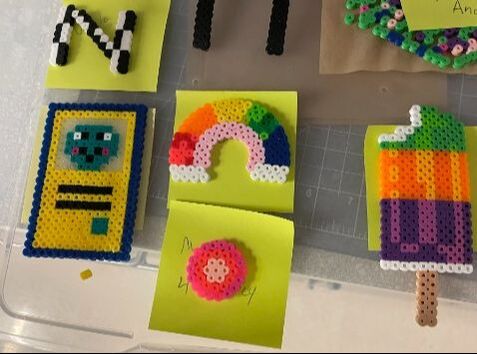
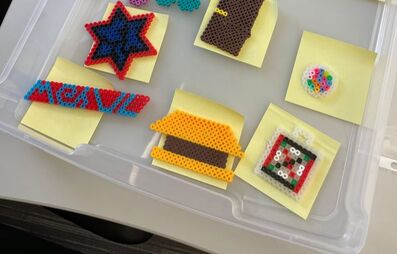
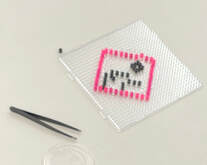
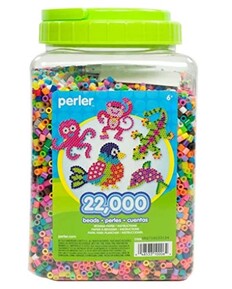
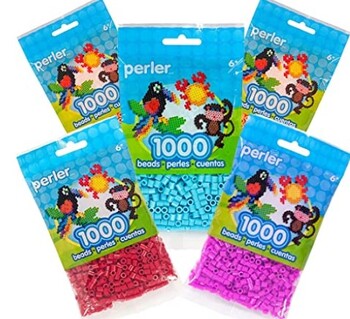
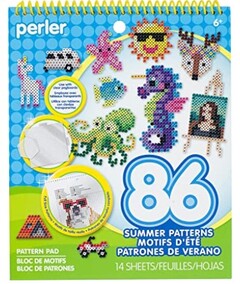
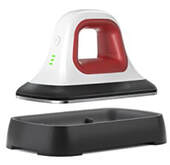
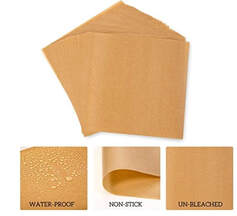
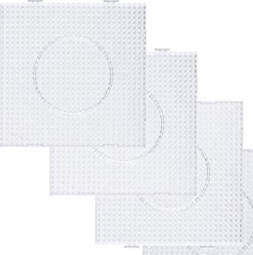
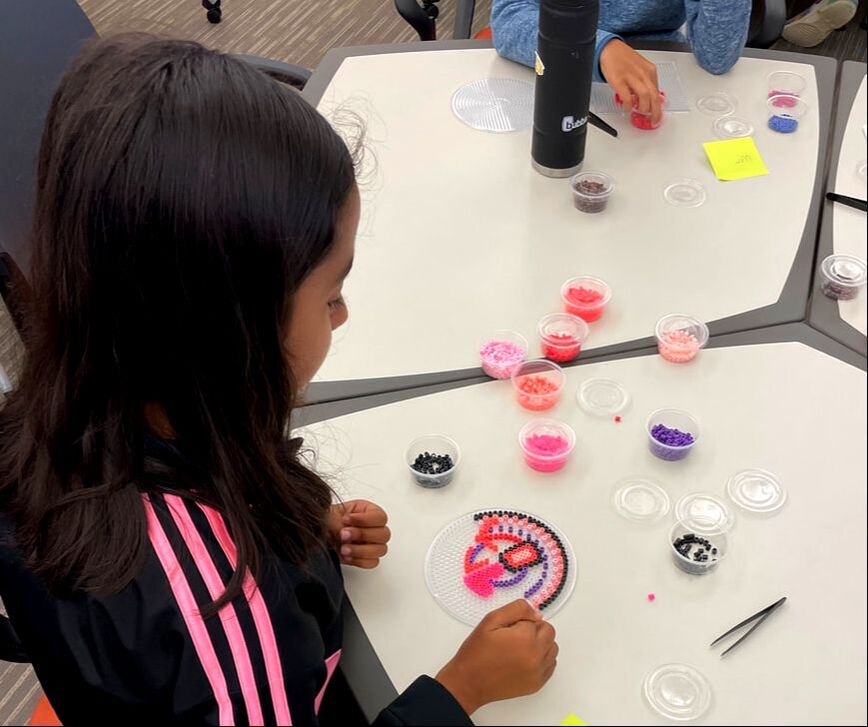
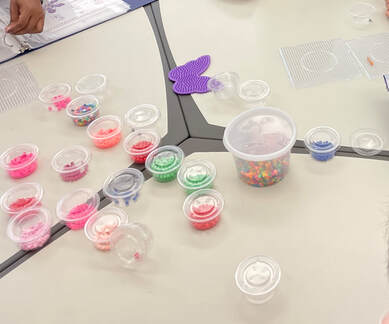
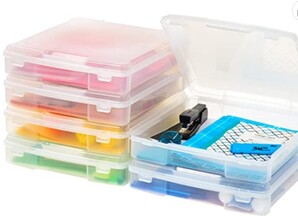
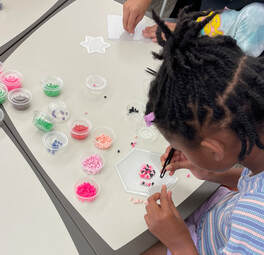
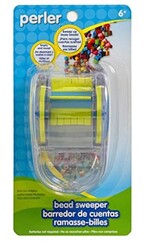
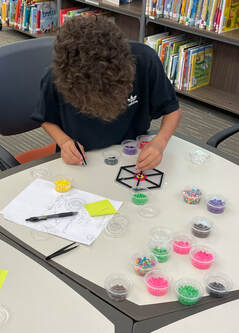
 RSS Feed
RSS Feed
